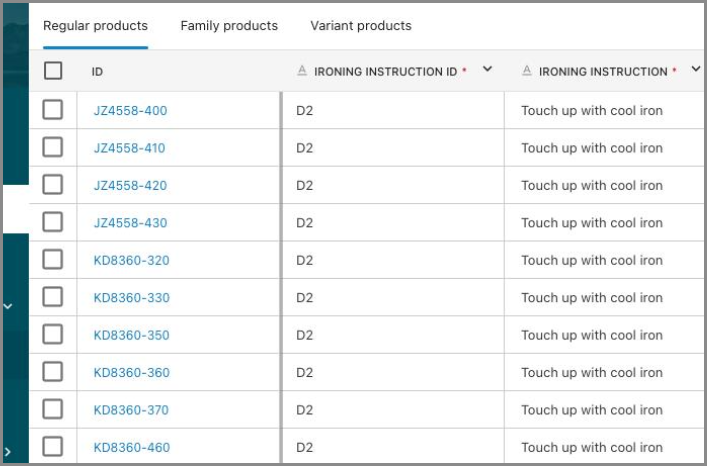Below is a list of known limitations for the PDX STEPXML based outbound integration endpoint.
Note: As of the 2025.2 release, LOV Value IDs are no longer limited. PDX previously only imported LOV values. Now, PDX will import LOV values as well as the value IDs. The IDs will be populated in master data on distinct attributes and available for mapping. This will be beneficial for mappings and transformations when the IDs more closely align with a channel’s data requirements. In the example below, PDX shows the ID of the LOV value, which follows the naming convention: <LOV Name<ID>.

Dimension dependent Asset content
You cannot transfer context-specific images by making the asset content dimension dependent as described in the 'Asset Dimension Dependencies' section of the Maintaining Assets topic in the Getting Started documentation. However, a similar result can be achieved by making the asset reference type dimension dependent instead.
Transfer of Product Families
You cannot transfer objects modeling a product family to PDX. However, if the ID of the family object is included on the object representing the core product record, PDX will allow a virtual grouping of products based on the value of such an attribute.
Product-to-Product References
You cannot transfer information about a products relationship to other products (e.g. accessories, bundles it’s included in, cross-sell opportunities, etc.) modeled through references in STEP with identical source and target object types.
Data containers
You cannot transfer data stored in STEP Data Containers. This means that the data either needs to the be modeled as flat attributes on the Object itself, or as a referential structure. For more information, refer to the Handling Nested Data Structures topic.
Dimension dependent STEP Names
You cannot transfer language-specific attribute, reference, and unit names to PDX. The STEP Names available in the 'default context' are the only source of information used in the data transfer. For more information, refer to the Base Setup topic.
Classification references
You cannot transfer references from products to classifications. Product-relevant information stored in the classification structure should be made available on the object representing the core product record through Business Actions in the Business Rules documentation or Calculated Attributes in the System Setup documentation.